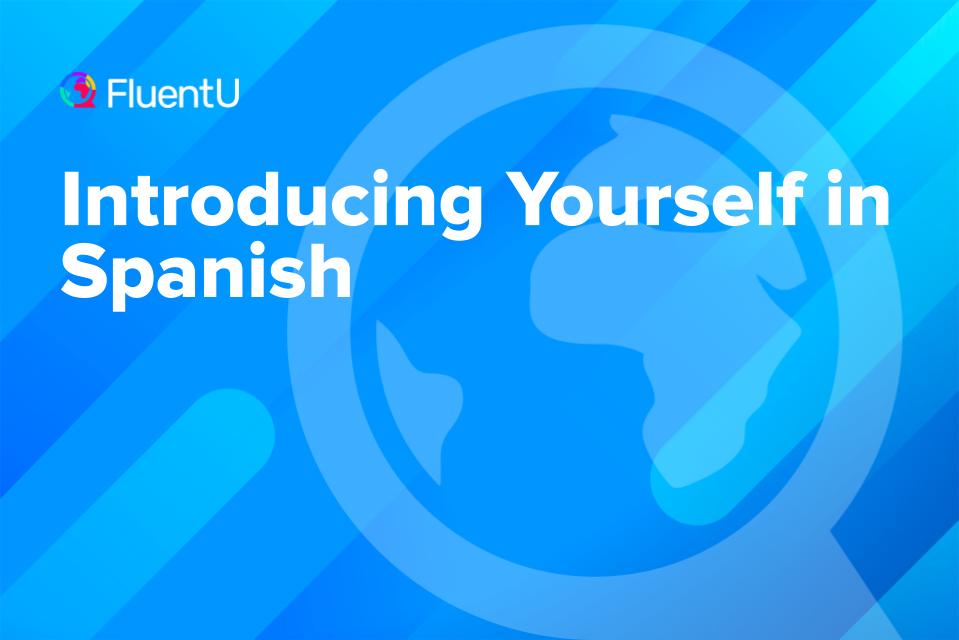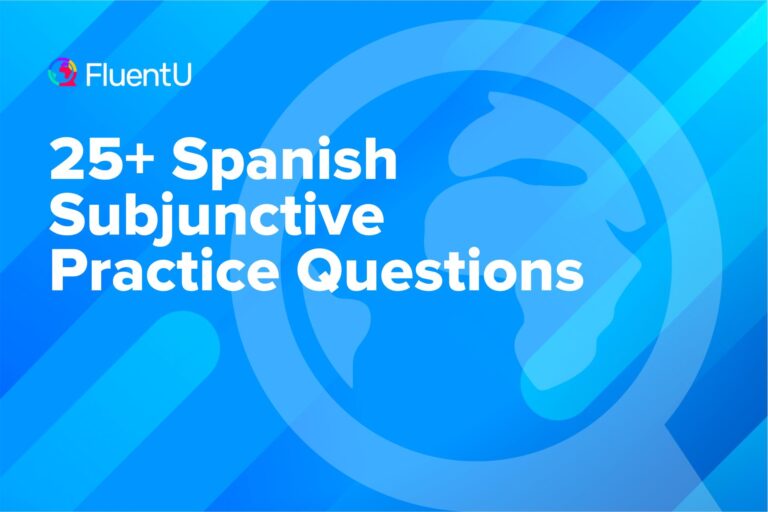How to Introduce Yourself in Spanish

An introduction tells people who you are. It often also conveys your basic personal information, such as your profession and your relationship to the people or person you’re meeting.
Get off to a good start with your new Spanish friends, associates and acquaintances by hitting all the introduction marks.
Download: This blog post is available as a convenient and portable PDF that you can take anywhere. Click here to get a copy. (Download)
Introducing Yourself in Spanish: Basic Words and Phrases
Before we get into the vocabulary, try your hand at our story-based lesson on conversational Spanish:
Saying Hello
¡Hola! (Hello!)
Buenos días. (Good morning.)
Buenas tardes. (Good afternoon.)
Buenas noches. (Good evening.)
Introducing Yourself
Me llamo… (My name is…)
Me llamo Susan. (My name is Susan.)
Soy… (I am…)
Soy Susan. (I am Susan.)
If you need to ask someone’s name, it’s a simple question. Just keep in mind the se (formal)/te (informal) (your) distinction, which shows the level of formality.
¿Cómo se llama? (What’s your name?—formal)
¿Cómo te llamas? (What’s your name?—informal)
Responding to an Introduction
Mucho gusto. (Nice to meet you.)
¡Encantado! (Happy to meet you! — masculine)
¡Encantada! (Happy to meet you! — feminine)
Estoy encantada de conocerla/conocerlo. (I’m pleased to meet you. — formal)
Introducing Others
Este es… (This is…)
Se llama… (His/her name is…)
Permíteme presentarle a Señor Gonzales. (I’d like to introduce you to Mr. Gonzales. — formal)
Showing Relationships
After you introduce someone, you may want to indicate the relationship you have to that person.
Este es mi… (This is my…)
Madre (Mother)
Padre (Father)
Hermana (Sister)
Amigo (Friend)
Marido (Husband)
Esposa (Wife)
Jefe (Boss)
Novia (Girlfriend)
Asking Questions
The all-purpose …y tú? / …y usted? (“…and you?”) is used to ask questions to further conversation. Keep in mind that the version used is dependent on the level of formality.
Consider the questions below for getting the conversational ball rolling!
¿A qué te dedicas? (What is your profession?—informal)
¿A qué se dedica? (What is your profession?—formal)
Soy… (I am a…)
Abogado (Lawyer — masculine)
Autora (Author — feminine)
Profesosa (Teacher — feminine)
Estudiante (Student)
For 90 more profession words and many more phrases to talk about work and careers, click over to this post.
¿Estás visitando? (Are you visiting? — informal)
¿Está visitando? (Are you visiting? — formal)
Estoy aquí por negocios. (I’m here on business.)
Estoy aquí por placer. (I’m here for pleasure.)
Estoy estudiando en la universidad. (I’m studying at the university.)
¿De dónde eres? (Where are you from?—informal)
¿De dónde es? (Where are you from? — formal)
Soy de Estados Unidos. (I’m from the United States.)
Leaving and Saying Goodbye
Adiós. (Goodbye.)
¡Un placer conocerte! (Pleasure meeting you! — informal)
¡Un placer conocerla/conocerlo! (Pleasure meeting you! — formal)
¡Hasta mañana! (Until tomorrow!)
¡Hasta luego! (Until next time!)
The Culture of Kissing Cheeks
When meeting someone in the Spanish-speaking world, the very first obstacle you’ll encounter is whether or not to greet with a beso (kiss) or two.
The norms for kissing vary around the world. But in almost any Spanish-language social interaction, some form of kissing will be involved. And, just to be clear, there’s no flirting involved when this is part of the greeting!
Be aware that it’s not actually a “real” kiss, merely a touching of cheeks. Sometimes, cheeks hardly graze each other.
There are regional differences to this practice. In Spain, people do two kisses and in many parts of Latin America, it’s just one kiss, so observe those around you to see exactly what to do. The rules also vary by gender. In some regions, men will only kiss women, but in other parts of the Spanish-speaking world, men will also kiss one another.
If you’re uncomfortable, though, never fear: Most Spanish speakers will completely understand if you, as a foreigner, aren’t accustomed to this practice. If you don’t want to do the kiss, a firm handshake, a smile and a greeting will be enough.
And if you do say hello with a cheek kiss, it’s good form to also cheek kiss goodbye.
Whether you’re in a Spanish-speaking environment for academic reasons, business, or you’re just traveling around, knowing how to greet others will make your experience much more meaningful. Watch these phrases in use by native Spanish speakers on the FluentU program to get even more context on how and when to use each.
FluentU takes authentic videos—like music videos, movie trailers, news and inspiring talks—and turns them into personalized language learning lessons.
You can try FluentU for free for 2 weeks. Check out the website or download the iOS app or Android app.
P.S. Click here to take advantage of our current sale! (Expires at the end of this month)

With these basic introductory phrases under your belt, you’ll be able to make friends and acquaintances without any trouble at all.
Have fun and good luck!
Download: This blog post is available as a convenient and portable PDF that you can take anywhere. Click here to get a copy. (Download)
And One More Thing…
If you've made it this far that means you probably enjoy learning Spanish with engaging material and will then love FluentU.
Other sites use scripted content. FluentU uses a natural approach that helps you ease into the Spanish language and culture over time. You’ll learn Spanish as it’s actually spoken by real people.
FluentU has a wide variety of videos, as you can see here:

FluentU brings native videos within reach with interactive transcripts. You can tap on any word to look it up instantly. Every definition has examples that have been written to help you understand how the word is used. If you see an interesting word you don’t know, you can add it to a vocab list.

Review a complete interactive transcript under the Dialogue tab, and find words and phrases listed under Vocab.

Learn all the vocabulary in any video with FluentU’s robust learning engine. Swipe left or right to see more examples of the word you’re on.

The best part is that FluentU keeps track of the vocabulary that you’re learning, and gives you extra practice with difficult words. It'll even remind you when it’s time to review what you’ve learned. Every learner has a truly personalized experience, even if they’re learning with the same video.
Start using the FluentU website on your computer or tablet or, better yet, download the FluentU app from the iTunes or Google Play store. Click here to take advantage of our current sale! (Expires at the end of this month.)







